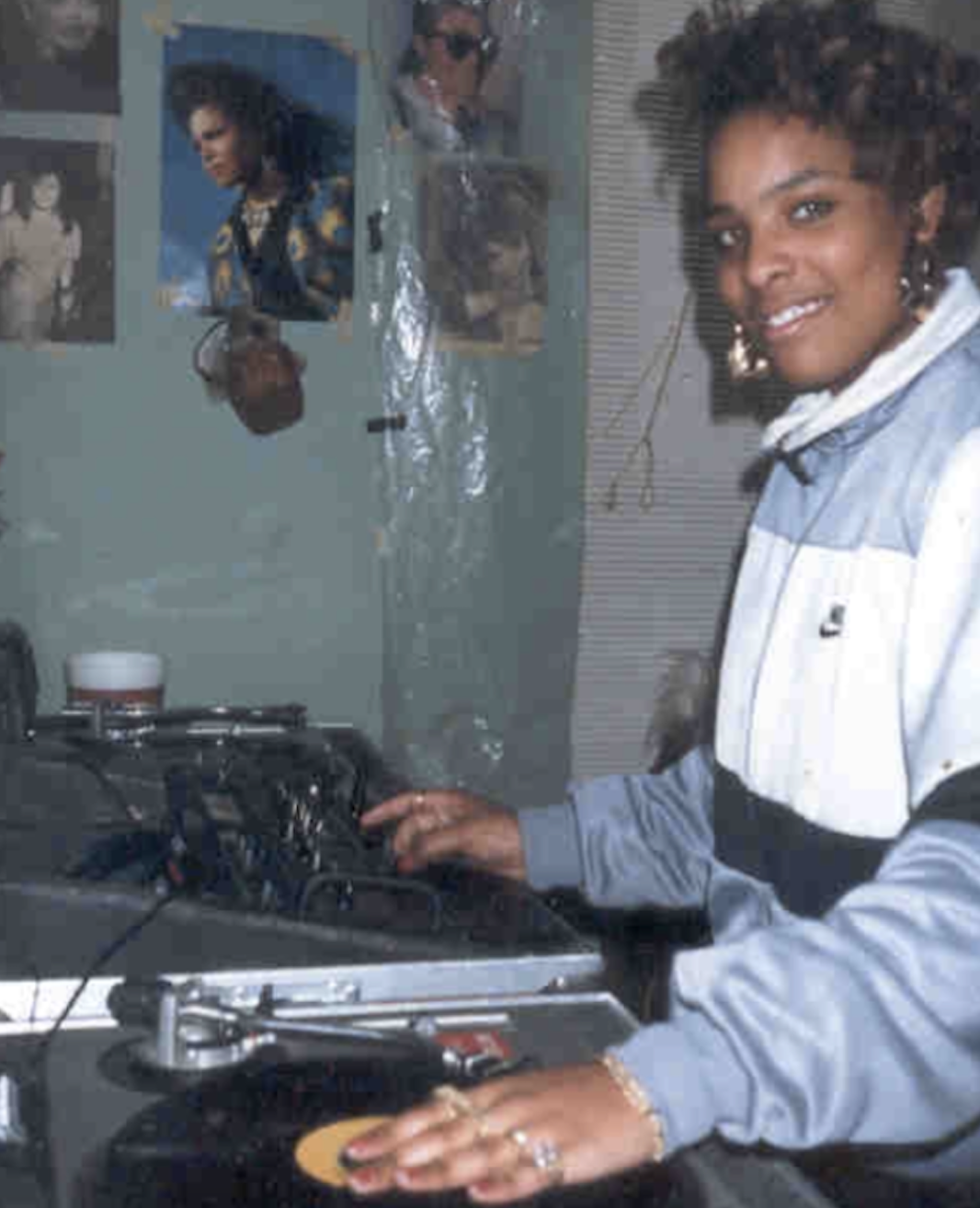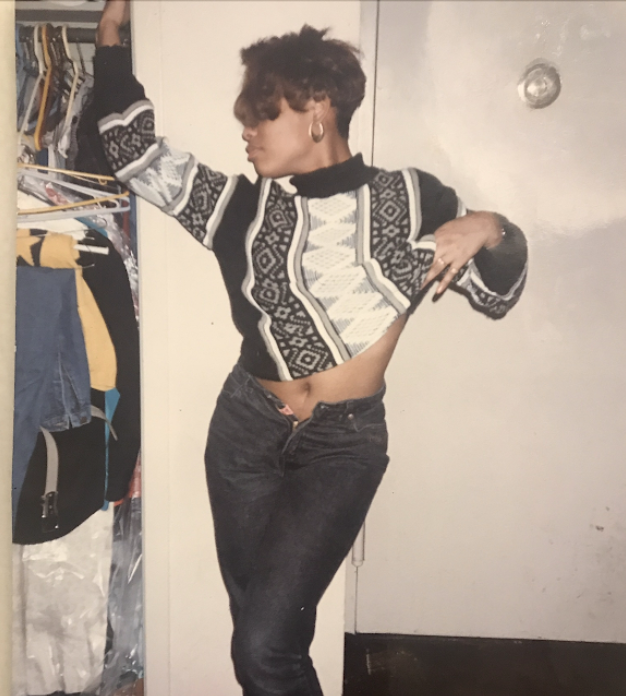Our friends at the Housing Authority of the City of Los Angeles (HACLA) shared the inspiring story of teen boxer Meryland Gonzales. Considered a success story already, HACLA sat down with Meryland in her home to learn about her dream to change the world – one fight at a time.
At only 13 years of age, Meryland has overcome many obstacles. Hailing from Gonzaque Village in Watts, this rising star began boxing as a 6-year-old. Having already won numerous belts, trophies, and medals — proudly displayed on her bedroom wall and dresser — she now has her eyes set on representing Team USA in the 2024 Olympics. Even with this big goal in mind, Meryland’s community remains close to her heart and one day she hopes to create a boxing gym in her neighborhood, bringing exposure and opportunities to other children just like her.
---
HACLA: Please tell us your full name and age.
Meryland: My name is Meryland Celeste Gonzalez Herrera. I’m 13 years old.
HACLA: How long have you lived in Gonzaque?
MG: My parents moved here when I 5 months… so basically, my whole life.
HACLA: And where do you go to school?
MG: I attend St. Lawrence of Brindisi right up the street. It’s a Catholic School.
HACLA: Do you have a favorite subject?
MG: Yes; I love Math and Science. It’s really a love and hate relationship. But I love the fact that math challenges me and makes me learn different ways of solving [one problem].
HACLA: Tell us a little more about your childhood. Were there any obstacles you had to overcome?
MG: Yes, there have been many obstacles… For one, convincing my parents to let me box! My mom wasn’t agreeable at first. She was afraid for me to get hit in the face. But it’s my passion. They support me now, but we can’t always afford to travel (hotel, food, plane tickets) to each tournament, so that’s hard sometimes. I’ve also had people tell me I can’t fight… that I can’t do this. Although it hurts to hear, I’m a human being with emotions, it motivates me to prove them wrong.
HACLA: Good for you!
MG: Yeah. Another obstacle was when I was 6 years old, I got sick and lost my memory. I couldn’t hold a spoon…. I was getting constant headaches and stomachaches. I was in treatment for 3 years and from hospital to hospital for about two months. I’m better now, but the Doctors never found out the reason. They believe it was a virus.
HACLA: Wow. That had to be terrifying for your parents! Can you talk a bit more about your family?
MG: My parents have always been there for me. I truly appreciate everything they’ve done for me. I wouldn’t be the person I am if it weren’t for them.
HACLA: And do you have any siblings?
MG: I do. I have a younger sister; she’s 5. And my older sister, Araceli, is 17. She always had the dream to be a national champion ice skater, but she couldn’t accomplish it. I used to see how hard she trained for 5 years… That really motivates me to keep fighting because I really look up to her. I win for her…
HACLA: It sounds like you’re really close to your big sister. That’s a special relationship.
MG: She really makes me proud and she’s always there for me. We’re just there for each other always. We both want to do big things in our community… Like make a gym for the kids at Nickerson (Gardens), Jordan (Downs), Avalon… We want to bring them together to make a team so they can get that same experience that we’ve had.
HACLA: That’s very impressive and inspiring! How long have you been boxing? How were you exposed to the sport?
MG: I’ve been boxing since I was 6 years old.
HACLA: So around the time you got really sick?
MG: Yes.
HACLA: Were your parents at all concerned that your sickness was connected to boxing?
MG: No. My sickness was unrelated to boxing and my dad was with me when it first happened. I was punching the bag and my nose just started bleeding… I started walking sideways…
HACLA: If it was from boxing you might not still be doing it today! So how were you exposed to the sport? MG: My family used to watch a lot of boxing. No one is a boxer in my family. I’m first generation. I said, ‘Dad, I want to try that!’ He said, ‘you’re crazy!’ (Laughter.) My parents had me in music, ballet, dance… But I wasn’t interested in any of that. My dad promised if I got good grades, he would take me to the gym to train. Even after I got good grades, he tried changing the subject many times. But eventually, he took me.
HACLA: And now he’s your biggest fan, right?
MG: Yep! My whole family actually… We’re all in this together. They’re always encouraging me and motivating me.
HACLA: Who is/are your favorite boxer(s)?
MG: Floyd Mayweather and Claressa Shields. They came from a place where they didn’t have that much support. They came from the bottom and now they’re professional boxers that everyone looks up to. I truly admire them; not because they’re famous but for their way of fighting. And I can relate to them.
HACLA: How do you feel boxing has changed your life?
MG: Boxing has changed my life in many different ways. Boxing has kept me on the right path and it’s made me see many different perspectives. It’s made me see how hard my parents work for a better future and success in life. It has shown me what I want to do for my community and also for myself. Boxing has taught me that there’s many different ways to solve something. Many people think boxing is a hatred sport. But it’s actually the opposite. At the end of the day, you show how much respect you have your opponent. They’re the person who makes you train harder. At the end of the day, everything is about sportsmanship.
HACLA: Where do you train?
MG: Casillas Boxing Gym in Lynwood.
HACLA: Can you walk us through a typical day? What is your routine?
MG: I wake up at 6:30am (and my Aunt comes to pick up my little sister). I walk with my cousin to school around 7:30am. I get out of school at 2:30pm and we head to the gym around 4pm. I have to change quick and eat really fast (laughs). At the gym, my coach tells me what workout to do… I leave the gym around 6:30pm, depending on if I’m training for a tournament or not. Then, I shower, do my homework and sleep around 9:30-10pm.
HACLA: Sounds like a pretty good day.
MG: You have to be dedicated. If you stop even one day, you notice the difference…
HACLA: Do you train on the weekends too?
MG: Yes. Sometimes my dad and I wake up at 5am to go running.
HACLA: Do you have a specific diet?
MG: In my family, we have the mindset of always eating healthy… so it isn’t a diet. It’s just a lifestyle. I drink a lot of water. Sometimes I don’t like vegetables (laughs) but I eat them because I know they’re going to benefit me.
HACLA: It seems to be paying off! Looking at the wall behind you, there are a lot of medals and awards. Can you tell us about an accomplishment you’re most proud of so far?
MG: I have three. But I’ll tell you about one. The WBC (World Boxing Council) I fought two times; it was a really hard fight. I had the mindset of entering the show and winning for my dad. It was Father’s Day. It’s a really competitive show. By winning, I know I made my dad proud. He was crying.
HACLA: That’s really sweet. He’ll remember that forever. What are your goals as it pertains to a boxing career?
MG: I want to become a part of Team USA and fight internationally. There’s a Tournament in December. If you win, you get a request for Team USA (Olympics 2024).
HACLA: What’s one piece of advice you’d like to give to anyone who reads this?
MG: We sometimes have to take risks in order to see the world differently. Listen to your parents and get your education because education’s the number one thing you should do. No matter where you come from, always follow what your heart wants to do. Never give up. Yes, there are a lot of obstacles, but take them as motivation to keep going.
HACLA: That’s great advice! Any additional dreams/aspirations outside of boxing?
MG: I want to graduate high school, go to university, get a degree and become a judge so I can help the world and make an impact on the community. I want to be someone…make my mark.
HACLA: You already are.
MG: Thank you.
---






















